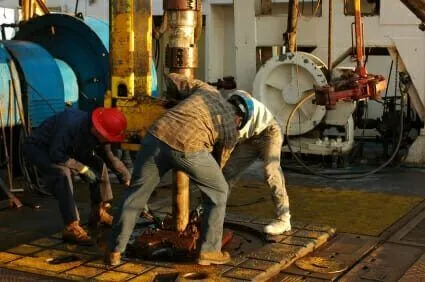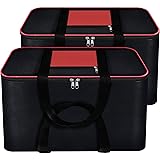Working in the oil and gas industry can be an exhilarating experience, but it also comes with its share of challenges and dangers. Having spent time in this demanding field, I know the risks associated with oil field injuries all too well. With heavy machinery, harsh environments, and the constant need for vigilance, it’s crucial to be aware of the common types of injuries that can occur and how we can work together to prevent them.
Common Types of Oil Field Injuries
Slips and Fall Injuries
We’ve all had that moment when our foot catches on something or we take a misstep. In an oil field environment, slips, trips, and falls can lead to serious consequences. Whether it’s uneven terrain, oil spills, or slick surfaces due to weather conditions, these hazards are everywhere. I once experienced a bad fall after tripping over a loose cable, resulting in a sprained ankle. It was a painful reminder of how easily things can go wrong.
Prevention: Maintaining clear walkways, using non-slip materials, and conducting regular inspections can make a difference. Also remember to wear the right footwear that provides good grip and support. A sturdy pair of boots can help prevent falls and keep us safe.
Burns and Explosions
The thrill of working with heavy equipment often comes with the risk of burns and explosions. I remember a close call when a small spark ignited during routine maintenance. It reminded me how quickly things can escalate. The risk of burns is significant, especially when dealing with flammable materials. I know someone who suffered severe burns from a sudden explosion, which impacted not just his health but his ability to work and provide for his family.
Prevention: It’s vital to follow strict safety protocols when handling these substances. Regular training on emergency procedures, proper storage practices, and wearing flame-resistant clothing can help keep us safe. If an incident occurs, it’s important to have legal support to navigate the aftermath and ensure fair compensation for injuries.
Equipment-Related Injuries
Many of us love working with machinery, but we must respect the potential dangers. Equipment-related injuries can happen in an instant. I experienced a close call when I was nearly struck by a moving part of a drilling rig. I’ve seen others suffer cuts and bruises as well, which reinforces the need for caution.
Prevention: Regular equipment inspections and maintenance are crucial. Thorough training on how to operate machinery safely cannot be overstated. Staying alert and maintaining a safe distance from operating equipment can save lives. If you’re injured on the job, consulting a lawyer can help ensure you receive the support you need.
Chemical Exposure
Dealing with hazardous chemicals is part of our daily routine, but it can lead to serious health issues if not handled correctly. I’ve seen how prolonged exposure affects respiratory health and can cause skin irritations. During one job, I developed a skin condition from improper handling of chemicals, which took time and treatment to resolve.
Prevention: Comprehensive training on handling these materials and ensuring the availability of appropriate personal protective equipment (PPE), like gloves and respirators, is essential. Ventilation systems in work areas can also help minimize our exposure to harmful chemicals, making the environment safer for everyone. If you experience health issues due to chemical exposure, an oilfield injury attorney can assist in seeking compensation for your medical expenses.
Heat Stress and Dehydration
The heat in oil fields can be relentless. I remember days when the temperature soared, making it crucial to stay hydrated and take breaks. I once ignored my body’s signals and ended up with heat exhaustion, which taught me how important it is to pay attention to our well-being.
Prevention: Let’s support each other by implementing heat stress prevention programs. Providing access to hydration stations, scheduling breaks, and recognizing the signs of heat-related illnesses are vital steps. Working during cooler hours can also help keep us safe and healthy.
Conclusion
Understanding the common types of oil field injuries and how to prevent them is important for all of us. We share a responsibility to maintain a safe work environment.
By sticking to safety guidelines, looking out for each other, and reporting hazards, we can reduce the chances of injuries. Creating a culture of safety ensures that everyone makes it home to their families at the end of the day.Knowing about the risks of oil field injuries is just the start. If accidents happen, it’s crucial to seek help, not only from coworkers but also from legal professionals who can guide you through the process of getting the support you need. Together, we can make our workplace safer and better for everyone. Let’s commit to safety and support each other in this challenging but rewarding industry.
Memory Foam Pillow, Contour Cervical Orthopedic Memory Foam Pillows Supports Neck Pain and Shoulder Pain for Sleeping, Ergonomic Cervical Pillow Neck Support Pillow for Side Back (Sado Dark Grey)
₹648.00 (as of 14 March, 2025 11:42 GMT +05:30 - More infoProduct prices and availability are accurate as of the date/time indicated and are subject to change. Any price and availability information displayed on [relevant Amazon Site(s), as applicable] at the time of purchase will apply to the purchase of this product.)Pigeon by Stovekraft Amaze Plus Electric Kettle (14289) with Stainless Steel Body, 1.5 litre, used for boiling Water, making tea and coffee, instant noodles, soup etc. (Silver)
₹549.00 (as of 14 March, 2025 11:47 GMT +05:30 - More infoProduct prices and availability are accurate as of the date/time indicated and are subject to change. Any price and availability information displayed on [relevant Amazon Site(s), as applicable] at the time of purchase will apply to the purchase of this product.)Storite 2 Pack Moisture Proof Nylon Large Size Underbed Storage Bag For Clothes (54 x 46 x 28 cm) - Black, Rectangular
₹499.00 (as of 14 March, 2025 11:47 GMT +05:30 - More infoProduct prices and availability are accurate as of the date/time indicated and are subject to change. Any price and availability information displayed on [relevant Amazon Site(s), as applicable] at the time of purchase will apply to the purchase of this product.)TEKCOOL Wall Clock 12" Silent Quartz Decorative Latest Wall Clock Non-Ticking Classic Clock Battery Operated Round Easy to Read for Room/Home/Kitchen/Bedroom/Office/School - Analog, Plastic Grey Gold
₹543.00 (as of 14 March, 2025 11:42 GMT +05:30 - More infoProduct prices and availability are accurate as of the date/time indicated and are subject to change. Any price and availability information displayed on [relevant Amazon Site(s), as applicable] at the time of purchase will apply to the purchase of this product.)Fuelbyte 30 PCS Wall Hooks for Photo Frames - Adhesive Wall Hooks Heavy Duty, No Drill Wall Hooks for Hanging Strong 5KG - Stick On Hooks for Wall, Strips for Photo Frame, and Wall Hangers for Room
₹279.00 (as of 14 March, 2025 11:42 GMT +05:30 - More infoProduct prices and availability are accurate as of the date/time indicated and are subject to change. Any price and availability information displayed on [relevant Amazon Site(s), as applicable] at the time of purchase will apply to the purchase of this product.)Discover more from The General Post
Subscribe to get the latest posts sent to your email.





